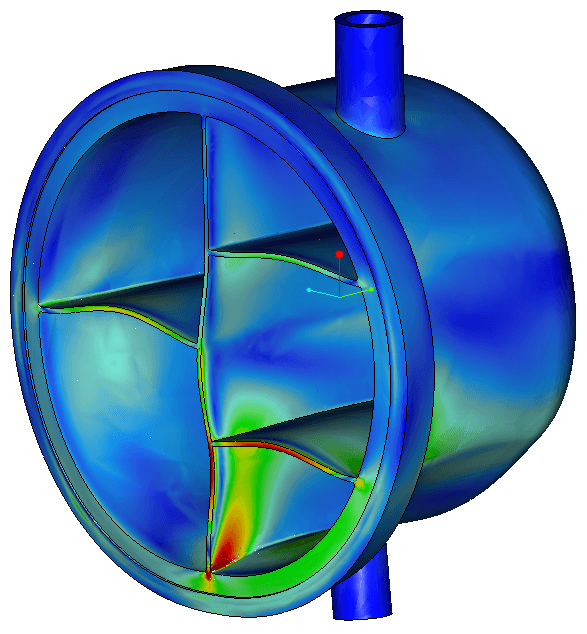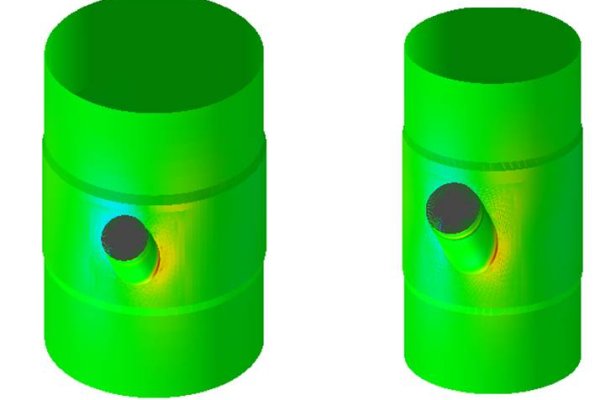This case study examines the detailed fatigue stress analysis conducted on a heat exchanger used to heat Polyol before it entered a refinery reactor. The complex 8-pass, U-tube configuration with a flanged stationary tube sheet required thorough investigation to ensure operational integrity and longevity.
Analysis Methodology
Engineers identified and analyzed various critical components using advanced Finite Element Analysis (FEA) techniques. The critical items, defined in close collaboration with the client, included:
- Top Channel: This encompassed the elliptical top head, cylinder, girth flange, and welded-in pass partition plates. Inlet and outlet nozzles were also incorporated into this model.
- Tubesheet: A three-dimensional model was created to calculate fatigue stresses caused by cyclic pressure differences across the plate.
- Critical Nozzles: Three-dimensional FEA models were constructed for these nozzles, incorporating cyclic pressure and nozzle loads.
- Most Inner U-tube: As Polyol was heated inside the tubes, resulting tube metal temperatures varied along their length, necessitating careful analysis.
For each model, appropriate calculations were performed based on defined cyclic operational load conditions. When necessary, engineers proposed modifications to reduce stresses.

Results and Recomendations
The FEA calculations revealed that the top channel was the most critical part of the heat exchanger. This criticality stemmed from temperature differences of the Polyol through various passes. Additionally, the flange ring reached higher temperatures compared to the channel shell due to heat flow from the shell side. Consequently, the flange ring expanded more radially than the welded-in pass partition plates cooled by the Polyol, causing significant membrane stresses at the welds between pass partition plates and flanges.
To mitigate fatigue stresses to acceptable limits at these locations, engineers proposed connecting all partition plates to the cylindrical shell using full penetration welds. This recommendation applied to welds between the partition plate and shell, as well as between the partition plates themselves.
Key Takeaways
- Detailed FEA is crucial for assessing fatigue stresses in complex heat exchanger designs.
- Temperature differentials across various components can lead to significant stress concentrations.
- Welding techniques and locations play a vital role in managing fatigue stresses.
- Collaboration between engineers and clients is essential for identifying critical components for analysis.
- Proactive design modifications based on FEA results can significantly enhance equipment longevity and reliability.
This case study underscores the importance of thorough fatigue analysis in refinery equipment design. By employing advanced FEA techniques and proposing targeted modifications, engineers can optimize heat exchanger performance and durability, ultimately enhancing refinery operations and safety.






